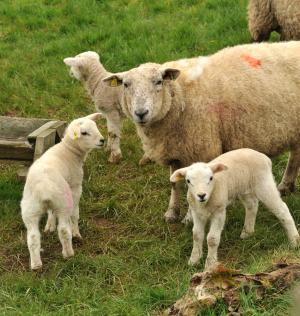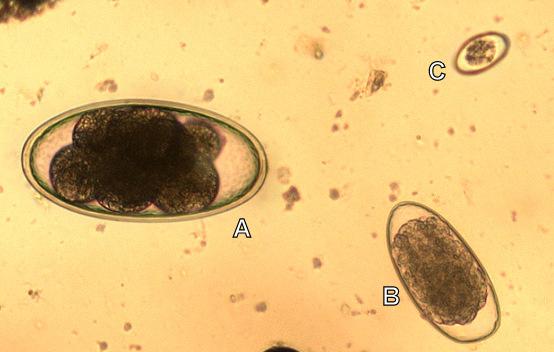AFBI issues Nematodirus Warning – Spring 2022
Date published:
The Agri-Food and Biosciences Institute (AFBI) Veterinary Sciences Division wishes to advise sheep farmers of the likely risk of Nematodirus worm infection in young lambs occurring at this time of year.

Nematodirus infection results from the ingestion of large numbers of infective worm larvae present on contaminated pasture. Lambs grazing the same pasture in the previous year were the source of this contamination. For Nematodirus eggs to hatch they should experience a period of cold weather followed by warmer conditions. These conditions are usually achieved during the winter and spring of each year. Nematodirus eggs passed out by lambs in 2021 will generally have remained unhatched on the ground throughout the winter season. Given suitable conditions of moisture and temperature, they will undergo mass hatching in the spring of 2022, resulting in a high risk of infection for lambs. Affected lambs develop profuse scour and can die rapidly.
Using a forecasting system based on climate data, staff at the Institute have determined that hatching of Nematodirus eggs has already commenced, and that 10 % of the annual hatch would have occurred between 10th and 22nd of March 2022. The current meteorological readings indicate that peak hatching is taking place at present; that is, between 27th March and 8th April 2022.

Farmers should be aware that Nematodirus infection might be confused with coccidiosis, another disease which can cause severe scour in young lambs. As the treatments for Nematodirus infection and coccidiosis are different, accurate diagnosis and treatment recommendations, through your veterinary surgeon, are essential.
Nematodirus disease can be avoided or reduced in lambs by:
- not grazing lambs on the same fields as those grazed by lambs of a similar age last year.
- using anthelmintic drenches every 2 to 4 weeks. The interval between doses depends both on the particular anthelmintic used and the severity of infection. To date, only limited evidence has been found of drug resistance in Nematodirus to any of the available classes of anthelmintic.
Your veterinary surgeon should be consulted at an early stage. He or she is in an ideal position to provide advice on the prevention and /or treatment strategy best suited to your particular circumstances. AFBI’s Veterinary Sciences Division can test faeces samples from sheep or cattle to determine the level of worm eggs present. A minimum of 5 grams of faeces from each animal is required for this test.
Notes to editors:
AFBI is an arms-length body of DAERA delivering research and development, diagnostic and analytical testing, emergency response capability and expert scientific advice for DAERA and other government departments, public bodies and commercial companies in Northern Ireland, and further afield.AFBI’s Vision is “Advancing the Local and Global Agri-Food Sectors Through Scientific Excellence”.AFBI’s core areas:Leading improvements in the agri-food industry;Protecting animal, plant and human health;Enhancing the natural and marine environment.